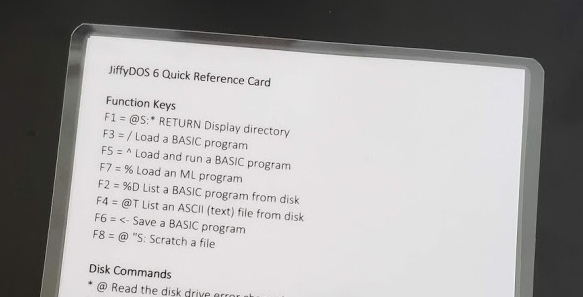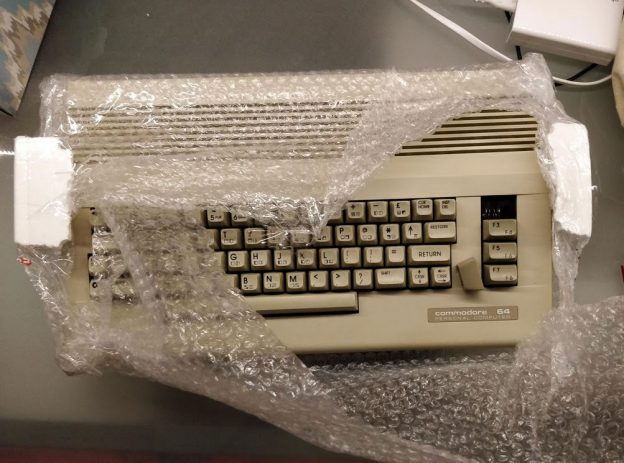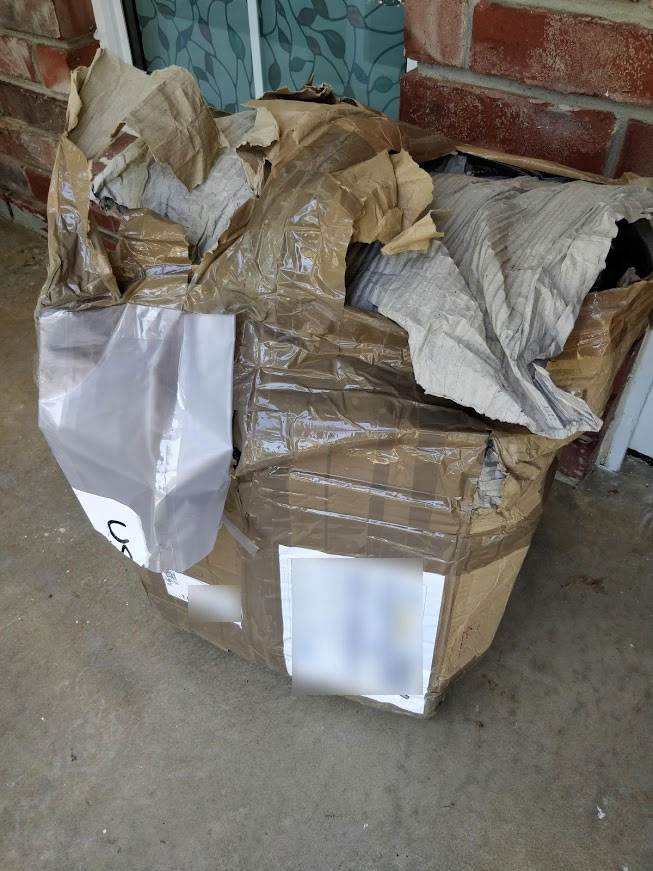Looks like a documentary I would enjoy watching. If this interests you, consider backing the project to help complete it:
https://www.iadoremy64film.com/

Looks like a documentary I would enjoy watching. If this interests you, consider backing the project to help complete it:
https://www.iadoremy64film.com/
I took my family for vacation to Branson, MO, and we stopped by the 1984 Arcade there. I had been to the 1984 Arcade in Springfield before, and this is much the same. Admission is a flat $10 per day per person, and you get unlimited video game plays. Pinball games are $0.25 to $0.50 a play.
This arcade is fun, clean, and has a great atmosphere, with 80s music and videos playing. I think only two arcade machines on the floor were out of order. I basked in the retro glow for a while before playing some Centipede, Tempest, Stargate, Zaxxon, and then Gauntlet and Vindicators with the kiddo.
I recorded this video for vacation memories, not to give a detailed review of the arcade or show all of the games they have on the floor. But I think it gives a good sense of the ambiance. Take a look if you’re interested.
Head on over to the 1984 Branson arcade website for more details.
Michael Steil gives a great run-through of the 1541, including a short history of Commodore floppy disk drives. In addition to explaining the hardware and firmware, he outlines some fastloader and copy protection techniques.
If you like this video, be sure to watch The Ultimate C64 Talk.

A couple of years ago I put a LumaFix64 into my PAL C64 and I was quite happy with the results, using a Sony PVM CRT monitor. You can read about that here. It does a good job of virtually eliminating those “jailbars” from the VIC-II output.
But lately, I am not using CRT displays any more, mainly because I just don’t want to devote the real estate to keeping them out. Instead, I’ve been using a RetroTINK 2X-Pro to scale the s-video (via Commodore4Ever AV Breakout) output from my C64s to HDMI.
I decided to add a LumaFIX to one of my NTSC units and do some actual comparisons. I already knew I was happy with what it does for the picture quality on a CRT monitor, but is it worthwhile when using an HD display through a RetroTINK? Here’s the video:
Note: it may be hard to see the jailbar effect clearly if you’re not viewing the 1080p stream.

Here’s a cheat sheet I printed up because I tend to forget less often used commands for the JiffyDOS DOS wedge. It also has some commands for the SD2IEC for changing and saving the default drive number.
4×6″ Formatted PDF: JiffyDOS_Quick_Reference_Card.pdf
Text file: JiffyDOS Commands.txt Also, the text is wrapped so that the first list of function keys displays nicely on my 1541 Ultimate (and Ultimate 64) file viewer, so this text file can be dropped in the root of the SD card for quick access in the menu.
I printed this out and laminated it. Here are some pics.

Well, “quest” is a little bit of an exaggeration. In reality, I had decided to stop thinking “I wish I had a PAL C64” as I had been for many years, and just get one.
For those who may not know, there are significant differences between the video standards of North America (NTSC) and Europe (PAL). These differences translate into incompatibilities between NTSC and PAL Commodore 64s with respect to what software they can correctly run, as each region had its own hardware designed with timings specific to the required video standards. Sometimes the difference is not important, but often it is. When developing my demo last year, I was keenly aware of this, and it can be a real challenge to write timing-sensitive code that works properly on both systems. You can read here for some technical details. But the bottom line is this: If you are using NTSC hardware, like I always have, you have limited support for modern software.
This isn’t a big deal at all if you are running C64 software in an emulator like VICE, but if you are like me, and have a penchant for CRT displays with old hardware, it really is a limiting factor. Why?
Most of the activity in “the scene” is going on in Europe, where they take advantage of the slower frame-rate and extra CPU cycles PAL-timing gives them.
And frankly, when it comes to retro computer and gaming hardware, there really is no substitute for a genuine cathode ray tube display. Which means: if you want to be able to run a variety of software, especially new software, you need to get a Commodore 64 that was sold in Europe.
I found a seller in Italy who was willing to part with a nice-condition C64C. He took the time to properly pack the unit in an amply over-sized box. I paid for express shipping, and he sent it promptly. About a week later, this arrived at my door.
 The box had obviously been set in water and soaked up a lot of it. The USPS claimed it arrived to them in that condition. I was surprised it even made it to me — the shipping label practically fell off when I took the paper masche, I mean box.
The box had obviously been set in water and soaked up a lot of it. The USPS claimed it arrived to them in that condition. I was surprised it even made it to me — the shipping label practically fell off when I took the paper masche, I mean box.
I figured it was time to collect some of my 8-bit/Commodore/Retro projects (some utility software, project pictures, etc etc) into one location.
So here it is. Um, that “one location.”
I’ll be getting some pages and posts up shortly.